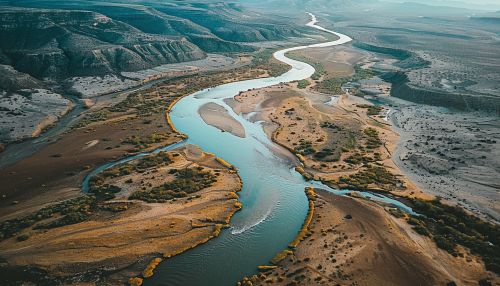Fluvial Processes
Introduction
Fluvial processes are the physical interactions that occur within river systems, shaping the landscape through the movement of water and sediment. These processes are primarily driven by the force of gravity and are influenced by a variety of factors, including the volume and velocity of water flow, the size and composition of sediment, and the topography of the river channel and surrounding landscape.
Hydrology of Fluvial Processes
The hydrology of fluvial processes refers to the study of how water moves through a river system. This includes the flow of water, its velocity, and its interaction with the river channel. The hydrological cycle, which describes the continuous movement of water on, above, and below the surface of the Earth, plays a crucial role in fluvial processes.


Sediment Transport
Sediment transport is a fundamental aspect of fluvial processes. It involves the movement of sediment, both in solution and as bedload, within the river system. This can occur through a variety of mechanisms, including erosion, deposition, and bed load transport.
River Channel Morphology
The morphology of a river channel is shaped by fluvial processes. This includes the size and shape of the channel, as well as its gradient and the characteristics of its bed and banks. River channel morphology is dynamic and changes over time in response to changes in water flow and sediment transport.
Fluvial Landforms
Fluvial processes are responsible for the creation of a variety of landforms. These include features such as river valleys, floodplains, deltas, and alluvial fans. Each of these landforms is the result of specific processes of erosion and deposition.
Human Interaction with Fluvial Processes
Humans interact with fluvial processes in a variety of ways. This includes the construction of dams and levees, river channelization, and land use practices that can influence erosion and sediment transport. Understanding these interactions is crucial for effective river management and conservation.
